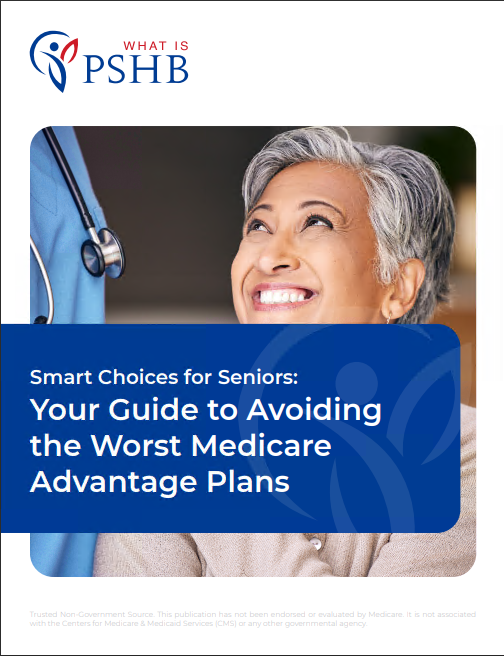Key Takeaways:
- Understanding the Medicare Part B enrollment requirement is essential for postal retirees transitioning to PSHB.
- Enrolling in Medicare Part B provides comprehensive coverage and reduces out-of-pocket expenses.
What Postal Retirees Should Know About Medicare Part B Enrollment and PSHB
Navigating health benefits can be challenging, especially with new programs like the Postal Service Health Benefits (PSHB) program. For postal retirees, understanding the relationship between Medicare Part B and PSHB is crucial for ensuring seamless and comprehensive healthcare coverage. This guide outlines what you need to know about enrolling in Medicare Part B to be eligible for PSHB.
Eligibility Basics for Medicare Part B and PSHB
The Postal Service Reform Act of 2022 introduced the PSHB program, which will begin coverage on January 1, 2025. One key eligibility requirement for PSHB is that postal retirees and their eligible family members must enroll in Medicare Part B if they qualify. This requirement ensures better coordination of benefits and cost-sharing between Medicare and PSHB plans.
For example, if a postal retiree is eligible for Medicare Part B but fails to enroll, they will not qualify for PSHB coverage. This mandatory enrollment aims to optimize healthcare costs and ensure comprehensive coverage for retirees.
How to Enroll in Medicare Part B for PSHB
To facilitate the transition to PSHB, the Social Security Administration (SSA) has established a Special Enrollment Period (SEP) for eligible postal annuitants and their family members. This period runs from April 1, 2024, through September 30, 2024. During this time, retirees can enroll in Medicare Part B without facing late enrollment penalties.
Enrollment can be completed by submitting the CMS-40B form, which is part of the enrollment package sent by USPS. This form needs to be completed and returned to the Social Security Administration. Ensuring timely enrollment in Medicare Part B is essential to maintain eligibility for PSHB coverage.
Important Enrollment Dates and Periods
Postal retirees must be aware of critical enrollment periods to avoid lapses in coverage. The Special Enrollment Period (SEP) from April to September 2024 is a one-time opportunity to enroll in Medicare Part B without penalties. This period is specifically designed to aid in the transition to the PSHB program.
Missing this SEP could result in delays and potential penalties, affecting both Medicare and PSHB coverage. Therefore, it’s crucial to adhere to these deadlines and complete the enrollment process promptly.
Medicare Part B Costs and PSHB Coverage
While enrolling in Medicare Part B involves paying monthly premiums, the integration with PSHB can lead to overall cost savings. In 2024, the standard monthly premium for Medicare Part B is $174.70. These premiums are an additional expense for retirees, but they provide substantial benefits when coordinated with PSHB coverage.
PSHB plans will integrate Medicare Part D employer group waiver plans (EGWP), ensuring comprehensive prescription drug coverage. This integration helps reduce out-of-pocket costs for medications, making healthcare more affordable for retirees.
Coordinating Benefits Between Medicare Part B and PSHB
One of the significant advantages of enrolling in Medicare Part B is the coordination of benefits with PSHB. Medicare will act as the primary payer for medical services, while PSHB will cover additional costs not paid by Medicare. This coordination minimizes out-of-pocket expenses for retirees, covering hospital stays, physician visits, and preventive care.
Additionally, PSHB plans are required to provide prescription drug benefits through Medicare Part D, further reducing costs for retirees. This comprehensive coverage ensures that postal retirees receive extensive healthcare benefits, aligning with their specific needs.
Common Questions About Medicare Part B and PSHB
Q: What happens if I don’t enroll in Medicare Part B? A: Failing to enroll in Medicare Part B will make you ineligible for PSHB coverage. Ensuring enrollment is crucial to maintain continuous and comprehensive healthcare coverage.
Q: Are there penalties for late enrollment in Medicare Part B? A: Yes, typically there are penalties for late enrollment in Medicare Part B. However, the Special Enrollment Period (SEP) from April to September 2024 allows eligible postal retirees to enroll without facing these penalties.
Q: How do Medicare Part B and PSHB work together? A: Medicare Part B acts as the primary payer for medical services, while PSHB covers additional costs not paid by Medicare. This coordination reduces out-of-pocket expenses for retirees.
Q: Will my prescription drugs be covered under PSHB? A: Yes, PSHB plans are required to integrate Medicare Part D, ensuring comprehensive prescription drug coverage through Employer Group Waiver Plans (EGWP).
Q: What are the key dates I need to remember? A: The Special Enrollment Period (SEP) for Medicare Part B runs from April 1, 2024, through September 30, 2024. Enrolling during this period ensures eligibility for PSHB coverage starting January 1, 2025.
Conclusion: Ensuring Comprehensive Coverage
Understanding the Medicare Part B enrollment requirement is essential for postal retirees transitioning to PSHB. By enrolling in Medicare Part B, retirees can benefit from coordinated healthcare coverage that minimizes out-of-pocket expenses and provides extensive benefits. Adhering to enrollment deadlines and completing the necessary forms ensures a smooth transition to PSHB, offering peace of mind and comprehensive healthcare coverage.
Contact Information:
Email: [email protected]
Phone: 8595550123









